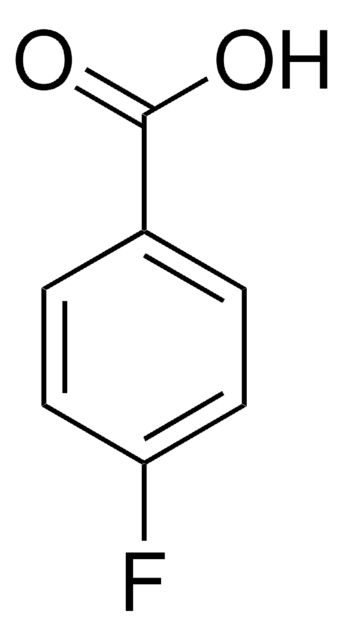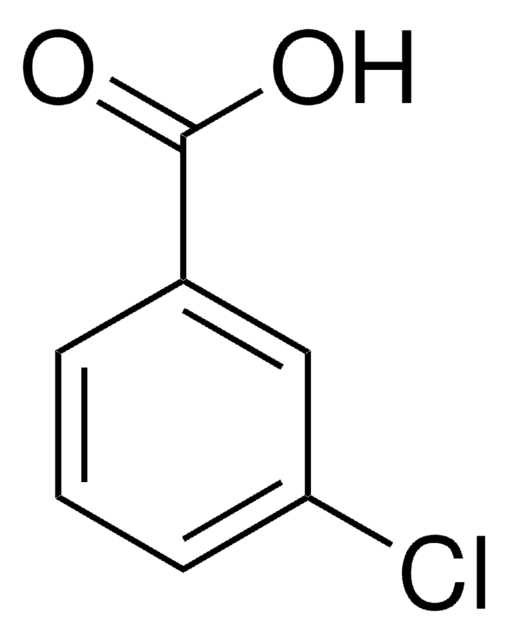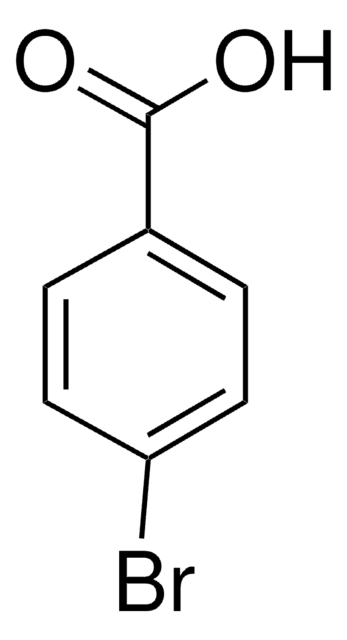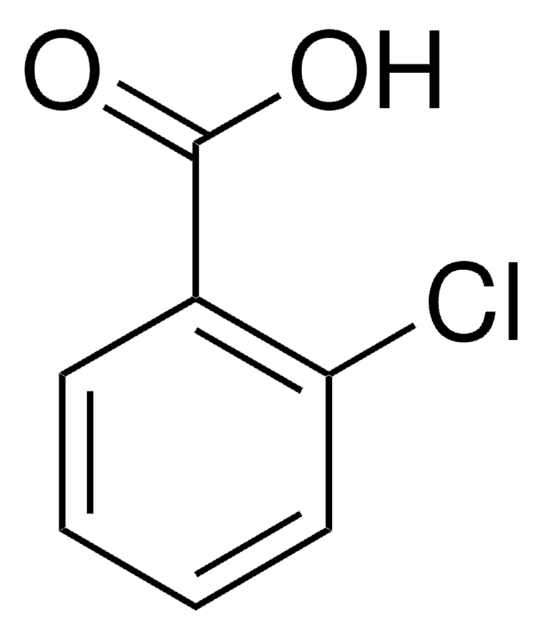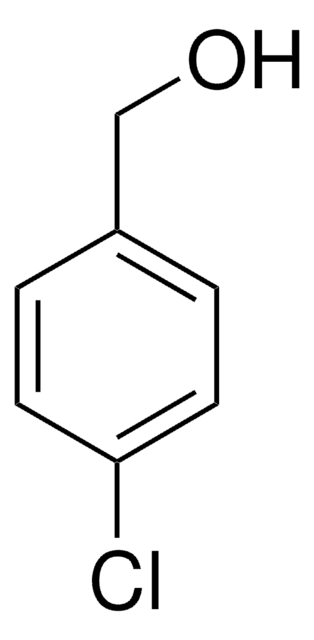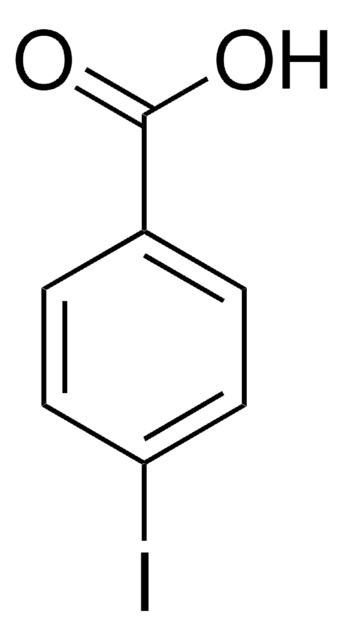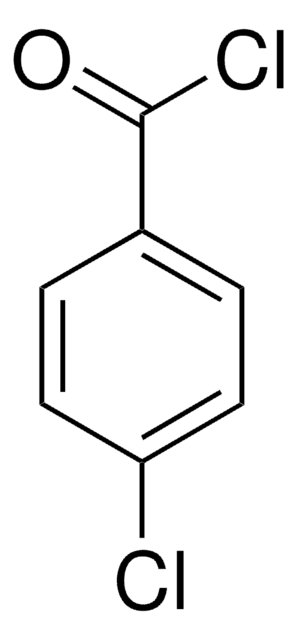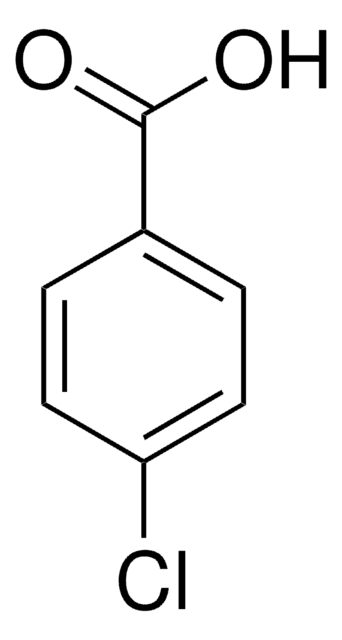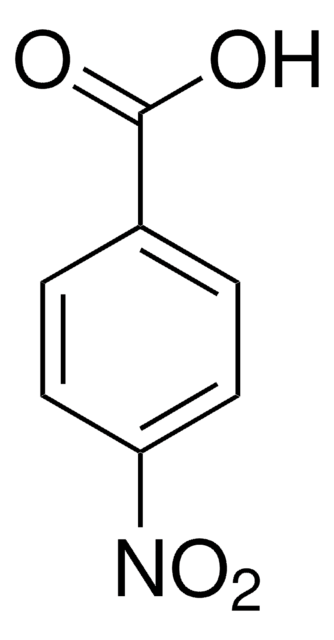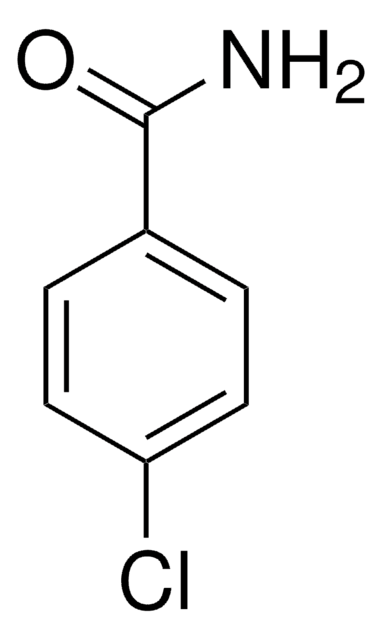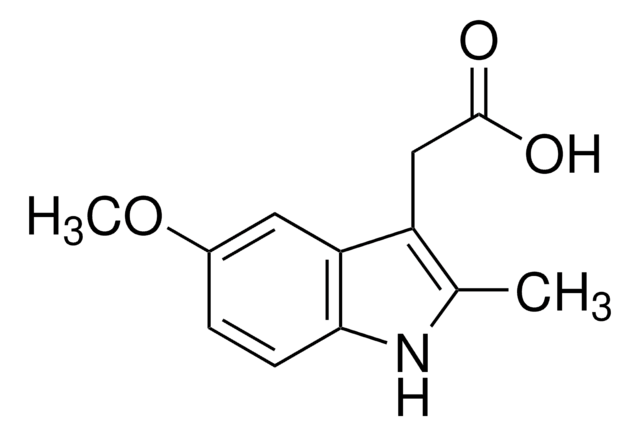추천 제품
Quality Level
분석
99%
양식
powder
mp
238-241 °C (lit.)
solubility
methanol: soluble 1%, clear, colorless to faintly yellow
작용기
carboxylic acid
chloro
SMILES string
OC(=O)c1ccc(Cl)cc1
InChI
1S/C7H5ClO2/c8-6-3-1-5(2-4-6)7(9)10/h1-4H,(H,9,10)
InChI key
XRHGYUZYPHTUJZ-UHFFFAOYSA-N
유사한 제품을 찾으십니까? 방문 제품 비교 안내
일반 설명
4-Chlorobenzoic acid is a degradation product of indomethacin. It is degraded by Acinetobacter sp. strain ST-1 and causes its dehalogenation to yield 4-hydroxybenzoic acid under both aerobic and anaerobic conditions.
애플리케이션
4-Chlorobenzoic acid can be used:
- As a ligand to synthesize luminescent lanthanide complexes for bio-labeling or fiber communication applications.
- To prepare organotin(IV) chlorobenzoates exhibiting anticorrosion properties.
- As a ligand to synthesize di-n-butyl(4-chlorobenzoxy)(4-chlorobenzohydroxamato)tin(IV).
신호어
Warning
유해 및 위험 성명서
예방조치 성명서
Hazard Classifications
Acute Tox. 4 Oral
Storage Class Code
11 - Combustible Solids
WGK
WGK 2
Flash Point (°F)
460.4 °F - closed cup
Flash Point (°C)
238 °C - closed cup
개인 보호 장비
dust mask type N95 (US), Eyeshields, Gloves
이미 열람한 고객
Aliyeh Hasanzadeh et al.
Scientific reports, 9(1), 13780-13780 (2019-09-26)
Nanocarbon materials are considered to be active for electrochemical oxygen reduction reaction (ORR) for hydrogen peroxide (H2O2) synthesis. In the present work, a new type of fullerene 60 (C60)-carbon nanotubes (CNTs) hybrid with covalently attached C60 onto outer surface of
Heather O'Neal Tugaoen et al.
The Science of the total environment, 613-614, 1331-1338 (2017-10-04)
A key barrier to implementing photocatalysis is delivering light to photocatalysts that are in contact with aqueous pollutants. Slurry photocatalyst systems suffer from poor light penetration and require post-treatment to separate the catalyst. The alternative is to deposit photocatalysts on
Ruiyang Xiao et al.
Environmental pollution (Barking, Essex : 1987), 257, 113498-113498 (2019-11-26)
Carbamazepine (CBZ), a widely detected pharmaceutical in wastewaters, cannot currently be treated by conventional activated sludge technologies, as it is highly resistant to biodegradation. In this study, the degradation kinetics and reaction mechanisms of CBZ by hydroxyl radical (OH) and
Kikuo Kobayashi et al.
The Journal of general and applied microbiology, 43(2), 105-108 (1997-04-01)
Acinetobacter sp. strain ST-1, isolated from garden soil, can mineralize 4-chlorobenzoic acid (4-CBA). The bacterium degrades 4-CBA, starting with dehalogenation to yield 4-hydroxybenzoic acid (4-HBA) under both aerobic and anaerobic conditions, suggesting that the dehalogenating enzyme in the strain is
Q Q Cai et al.
Water research, 183, 116119-116119 (2020-07-15)
Fluidized bed reactor Fenton (FBR-Fenton) process was adopted for reverse osmosis concentrate (ROC) treatment with three types of carriers, including sand, zeolite and granular activated carbon (GAC). Adsorption studies demonstrated that GAC achieved the best adsorption performance (maximum COD removal
자사의 과학자팀은 생명 과학, 재료 과학, 화학 합성, 크로마토그래피, 분석 및 기타 많은 영역을 포함한 모든 과학 분야에 경험이 있습니다..
고객지원팀으로 연락바랍니다.